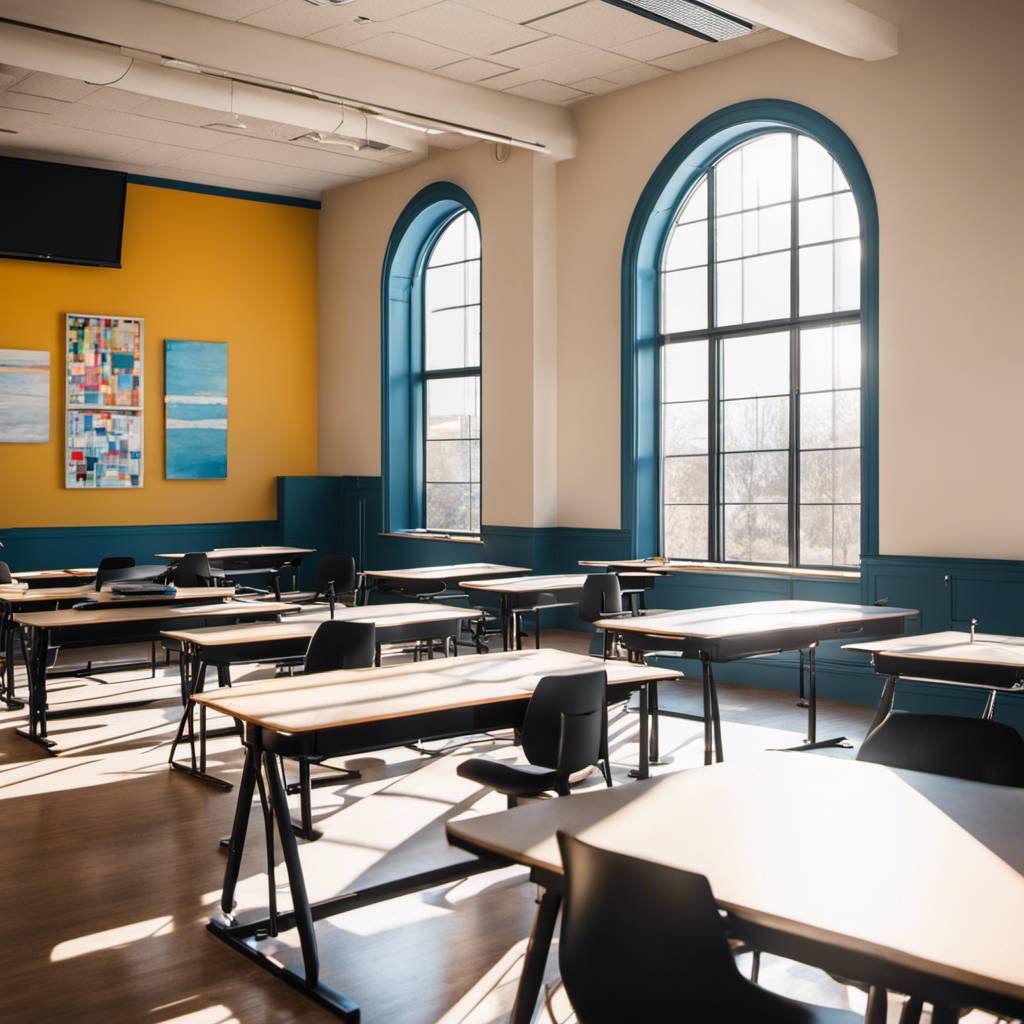
Topeka Schools Embrace Standing Desks to Boost Student Focus
In the bustling fourth-grade classroom of Madison Bach at Ross Elementary, a small group of students were struggling with a case of what teachers affectionately refer to as “the wiggles.” The challenge of keeping energetic, curious young minds engaged and focused while seated at traditional desks for extended periods of time was proving to be quite a hurdle. However, a fresh approach to learning is now helping these students channel their energy more productively while also keeping the “wiggles” at bay.
Topeka USD 501 has embarked on a mission to install over 100 standing desks across various classrooms in the district. This initiative is aimed at providing students with an alternative way to stay focused and less distracted. The standing desks are not just a trend; they are a response to years of research into their health and posture benefits, primarily for adults in office settings. The findings from these studies have prompted educators to explore their potential in classrooms, especially for elementary students.
While the impact of standing desks on academic performance is still under study, the initial findings indicate a positive influence on students’ ability to learn. This is particularly true for those who find it challenging to stay attentive while seated at traditional desks. As Bach, the fourth-grade teacher, explains, “The students, if they feel they have to roam around, can do it around their desk, rather than doing it all over the classroom or even outside it.”
In Bach’s class, a few standing desks were introduced last week, specifically targeting three students who found it difficult to remain stationary for long periods. The initial response has been overwhelmingly positive. Fourth-grader Zara Douglas shares, “These have been perfect, because standing helps me stay awake when I’m tired.” Her classmate Eve Socia adds, “If you have a lot of energy, like if you didn’t get to go out to recess, instead of just sitting down and not getting to get up, we can just use the desk.”
As standing desks become more prevalent in classrooms across Ross Elementary and other schools, Eva Yerkes, the school counselor, anticipates a growing demand for this innovative learning tool. Yerkes has also incorporated a couple of standing desks in her office, providing students with an opportunity to experience this new approach to learning and staying focused.
However, the introduction of standing desks in classrooms requires adaptability from teachers. The desks are ideally positioned at the back of a classroom, necessitating some teachers to modify their teaching styles to accommodate students who aren’t necessarily seated during a lesson. Yerkes envisions at least a few standing desks in every classroom, stating, “When we were first told about these, I immediately thought of a few kids per class who have a lot of energy that this will benefit.”
While Bach acknowledges that it might be a stretch to advocate for every desk to be a standing desk, she firmly believes that for those students who truly need an alternative, it can make a world of difference. Drawing from her personal experience with ADHD and dyslexia, she empathizes with students who struggle without the necessary resources to succeed.
The introduction of standing desks in Topeka USD 501 classrooms is an exciting development for those wondering how to choose the best standing desk for their needs. As this trend continues to grow, it will be fascinating to see if the electric height adjustable standing desk becomes the best sit stand desk option for students. The health benefits of an electric stand up desk are already well-documented for adults; it’s time to see how they can impact our future generations.





